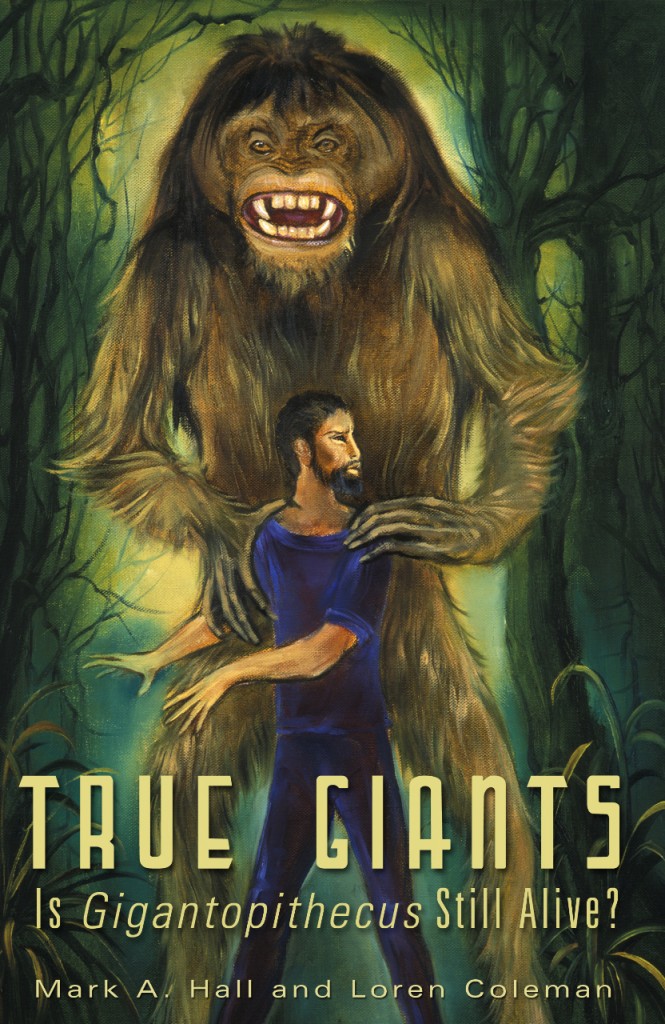
October 4, 2012
Has there been new True Giant or Bigfoot sightings only a few days ago?
On October 5th, you can listen to an interview about the recent sightings in the far North. While the CBC North radio newscasts don’t get posted online, if you can tune in on October 9th, Tuesday morning around 7am Eastern here, you will hear an interview on this breaking story.

As it happens, I was interviewed on October 3rd, about a new series of Far North sightings. I see the reporter has put news of this on Twitter, so I’ll mention here some of what I know. More details will be released [see updates above and below for those].
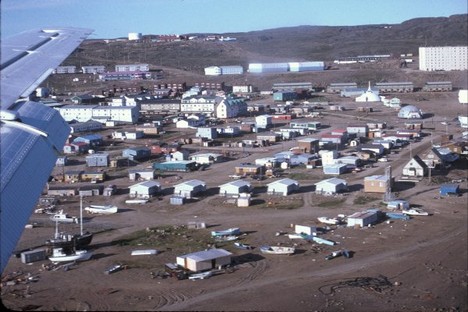
Jane Sponagle is a reporter with CBC North in Iqaluit. Where is Iqaluit (shown here)? That was one of my first questions to her. I quickly educated myself to a remote area I knew little about. Iqaluit is the territorial capital and the largest community of the Canadian territory of Nunavut. Until 1987, it was called Frobisher Bay, a name that is still occasionally used. Iqaluit is located on the south coast of Baffin Island at the head of Frobisher Bay. As of the 2011 census the population was 6,699.
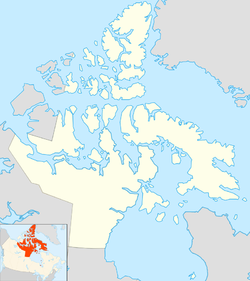
Okay, where is Nunavut on a map? Nunavut is the largest, northernmost, and newest territory of Canada; it was separated officially from the Northwest Territories on April 1, 1999. Oh, that helps. I knew about the NWT, but I wasn’t aware of this breakup and creation of a new territory via the Nunavut Act and the Nunavut Land Claims Agreement Act, even though the actual boundaries had been established in 1993. The creation of Nunavut resulted in the first major change to Canada’s political map since the incorporation of the new province of Newfoundland in 1949.

The region now known as Nunavut has supported a continuous indigenous population for approximately 4,000 years. Most historians identify the coast of Baffin Island with the Helluland described in Norse sagas, so it is possible that the inhabitants of the region had occasional contact with Norse sailors.
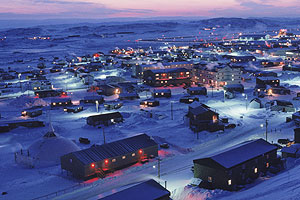
What Jane Sponagle had to share was remarkable, and intriguing. (See below.) After she told me of the sightings in Quebec, I informed her of past Quebec encounters, and those from nearby areas of Canada. I talked of the history of the use of the words Sasquatch, Bigfoot, and Windigo. And about Bushman too, but I wondered what the locals were really seeing?

As she posted on Twitter overnight, “2 berry pickers *** say they saw a hairy 10-15′ tall beast. I spoke to Dir.of Intl Cryptozoology Museum. Full story in AM #cbcnorth”
UPDATE: Jane Sponagle has emailed me to clarify that the berry pickers were not in Nunavut, proper, but very nearby, in Akulivik, Quebec. Also, in an interview that ran today in Inuktitut, one woman says the creature was 10 feet tall max. As mentioned below, other sighting have been occurring in Nunavut.
Nunavut means “our land” in Inuktitut. Apparently, two berry pickers were out in a rural area in Quebec, across Iqaluit, when they saw a large black hairy creature walking on two legs up a hill. They were very frightened, was sure it was not a musk oxen or a black bear, watched it leaving the area, jumped on their ATVs and left the area in a hurry. Apparently this sighting took place on September 29, 2012.
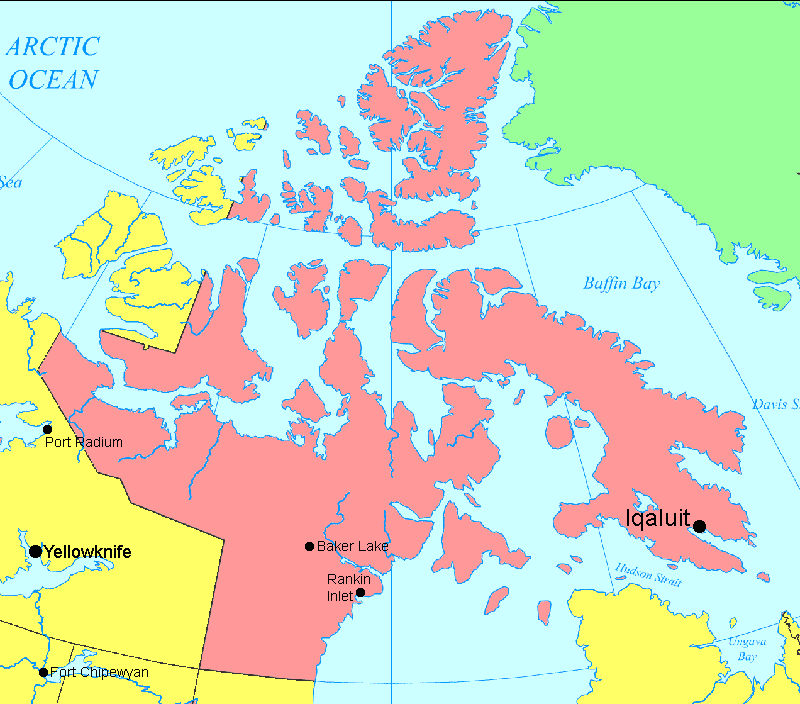
Spongale said that this area is above the tree line. One of things that got her wondering about this Quebec sighting is that in recent weeks, people around Iqaluit have been saying they are seeing strange hairy creatures. Wikipedia mentions a sense of the area:
Iqaluit is located in the Everett Mountains rising from Koojesse (Kuujussi) Inlet, an inlet of Frobisher Bay, on the southeast part of Baffin Island. It is well to the east of Nunavut’s mainland, and northeast of Hudson Bay….Iqaluit has a typically Arctic climate, although it is well outside the Arctic Circle, the city has cold winters and short summers that are too cool to permit the growth of trees. Although it is north of the tree line there are stillshrubs that are classed, locally, as trees. These include the Arctic Willow (Salix arctica) which is hard to recognize as a tree because of its low height. The permafrost does not allow the taproot to get deeper than 6 in (150 mm) so this does not allow vertical growth. The Arctic Willow may be up to around 25 ft (7.6 m) horizontally, but only 6 in (150 mm) tall. Average monthly temperatures are below freezing for eight months of the year. Iqaluit’s precipitation averages just over 400 mm (16 in) annually, much wetter than many other localities in the Canadian Arctic Archipelago, with the summer being the wettest season. Source
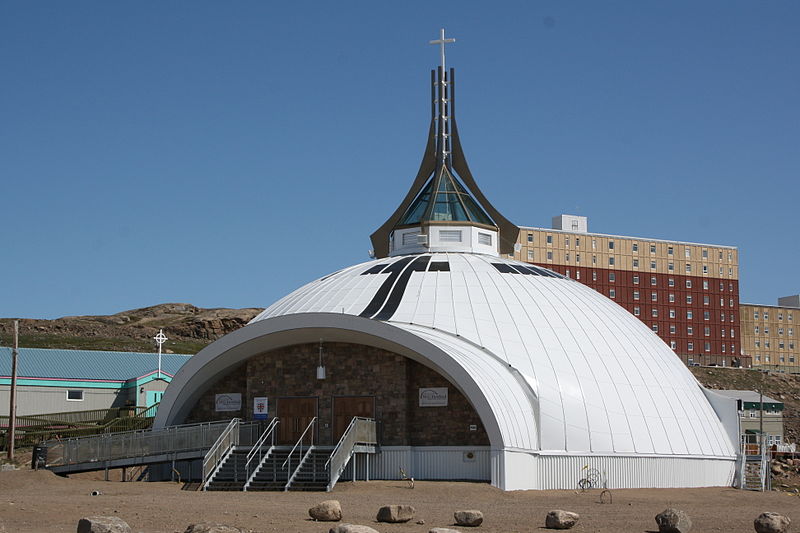
Iqaluit’s uniquely designed St. Jude’s Anglican Cathedral was made to look like an igloo.
The eyewitnesses were able to return to the northern extreme Quebec area in a timely fashion, and photographed tracks of this creature that were left in mud. The tracks measured 44 cm in length. That would be equal to 17.3228 inches. (The photos have not been shared with me yet.)
An eighteen inch long track would put this cryptid hominoid into the upper ranges of Sasquatch sightings.
The eyewitnesses said the “beast” was 10 feet tall.
Is this something more than an Eastern Sasquatch? Something different than a Nunavut Bigfoot? Could this be a tundra True Giant?
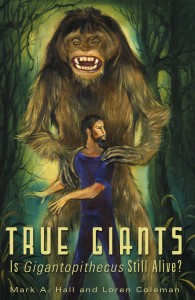
About Loren Coleman
Loren Coleman is one of the world’s leading cryptozoologists, some say “the” leading living cryptozoologist. Certainly, he is acknowledged as the current living American researcher and writer who has most popularized cryptozoology in the late 20th and early 21st centuries.
Starting his fieldwork and investigations in 1960, after traveling and trekking extensively in pursuit of cryptozoological mysteries, Coleman began writing to share his experiences in 1969. An honorary member of Ivan T. Sanderson’s Society for the Investigation of the Unexplained in the 1970s, Coleman has been bestowed with similar honorary memberships of the North Idaho College Cryptozoology Club in 1983, and in subsequent years, that of the British Columbia Scientific Cryptozoology Club, CryptoSafari International, and other international organizations. He was also a Life Member and Benefactor of the International Society of Cryptozoology (now-defunct).
Loren Coleman’s daily blog, as a member of the Cryptomundo Team, served as an ongoing avenue of communication for the ever-growing body of cryptozoo news from 2005 through 2013. He returned as an infrequent contributor beginning Halloween week of 2015.
Coleman is the founder in 2003, and current director of the International Cryptozoology Museum in Portland, Maine.
Filed under Bigfoot, Breaking News, CryptoZoo News, Sasquatch, True Giant, Windigo